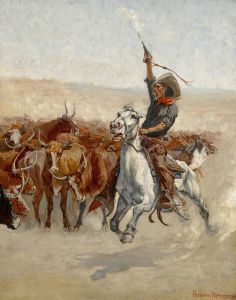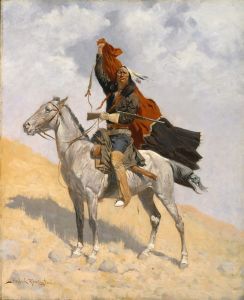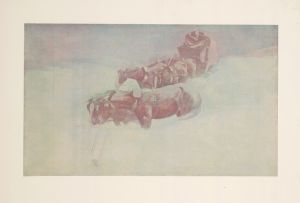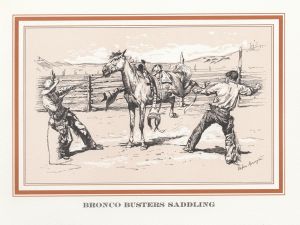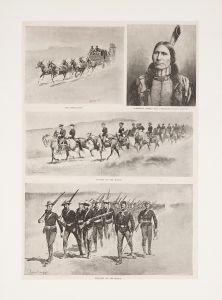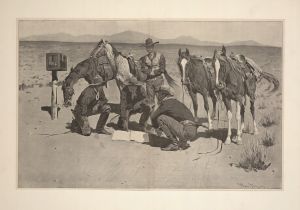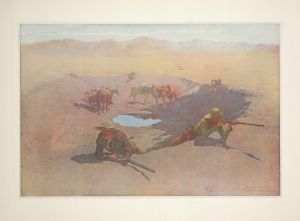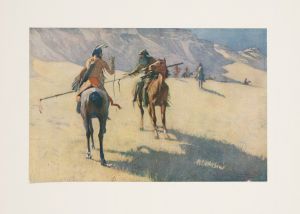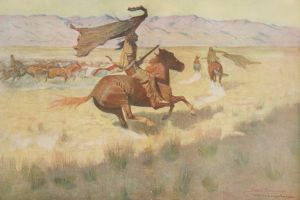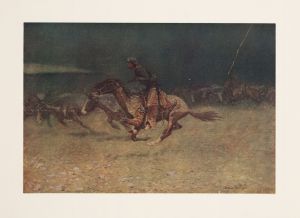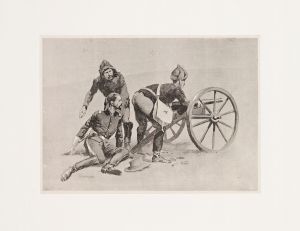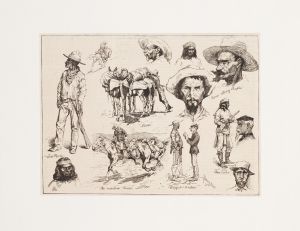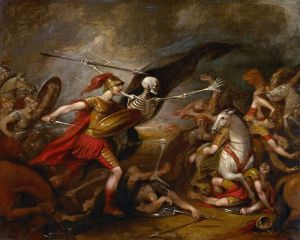
At the mouth of Rapid Creek–General Carr receiving the report of a scout
A hand-painted replica of Frederic Remington’s masterpiece At the mouth of Rapid Creek–General Carr receiving the report of a scout, meticulously crafted by professional artists to capture the true essence of the original. Each piece is created with museum-quality canvas and rare mineral pigments, carefully painted by experienced artists with delicate brushstrokes and rich, layered colors to perfectly recreate the texture of the original artwork. Unlike machine-printed reproductions, this hand-painted version brings the painting to life, infused with the artist’s emotions and skill in every stroke. Whether for personal collection or home decoration, it instantly elevates the artistic atmosphere of any space.
Frederic Remington was an American painter, illustrator, sculptor, and writer known for his depictions of the American Old West. His works often featured cowboys, Native Americans, and the U.S. Cavalry, capturing the spirit and drama of the frontier life during the late 19th and early 20th centuries. Among his many works is the painting titled "At the Mouth of Rapid Creek–General Carr Receiving the Report of a Scout."
This painting is a representation of a scene involving General Eugene Asa Carr, a notable figure in the U.S. Army during the Indian Wars. General Carr was known for his service on the frontier, particularly in the Great Plains and the Rocky Mountains, where he was involved in numerous campaigns against Native American tribes. Remington's painting captures a moment of military reconnaissance and communication, a common theme in his work that highlights the strategic and often tense interactions between the U.S. military and the Native American tribes during this period.
The scene depicted in "At the Mouth of Rapid Creek" shows General Carr receiving a report from a scout, a crucial aspect of military operations in the vast and often hostile territories of the American West. Scouts were essential for gathering intelligence on enemy movements, terrain, and other critical information that could influence the outcome of military engagements. Remington's attention to detail and ability to convey the urgency and importance of such moments are evident in the composition and execution of the painting.
Frederic Remington's artistic style is characterized by his dynamic compositions and realistic portrayals of the subjects he depicted. He had a keen eye for detail and a deep understanding of the landscapes and people of the American West, which he gained through extensive travels and firsthand experiences. This authenticity is reflected in "At the Mouth of Rapid Creek," where the figures are rendered with a sense of realism and immediacy that draws the viewer into the narrative.
The painting is part of Remington's broader body of work that documents the complexities and conflicts of the American frontier. His art serves as both a historical record and a romanticized vision of the West, capturing the tension between progress and tradition, civilization and wilderness. Remington's works, including this painting, have played a significant role in shaping the popular image of the American West and continue to be celebrated for their artistic and historical significance.
While specific details about the creation and current location of "At the Mouth of Rapid Creek–General Carr Receiving the Report of a Scout" are not widely documented, the painting remains an important example of Remington's contribution to American art and his portrayal of the frontier experience. Through his work, Remington has left a lasting legacy that continues to influence the perception and understanding of the American West.





